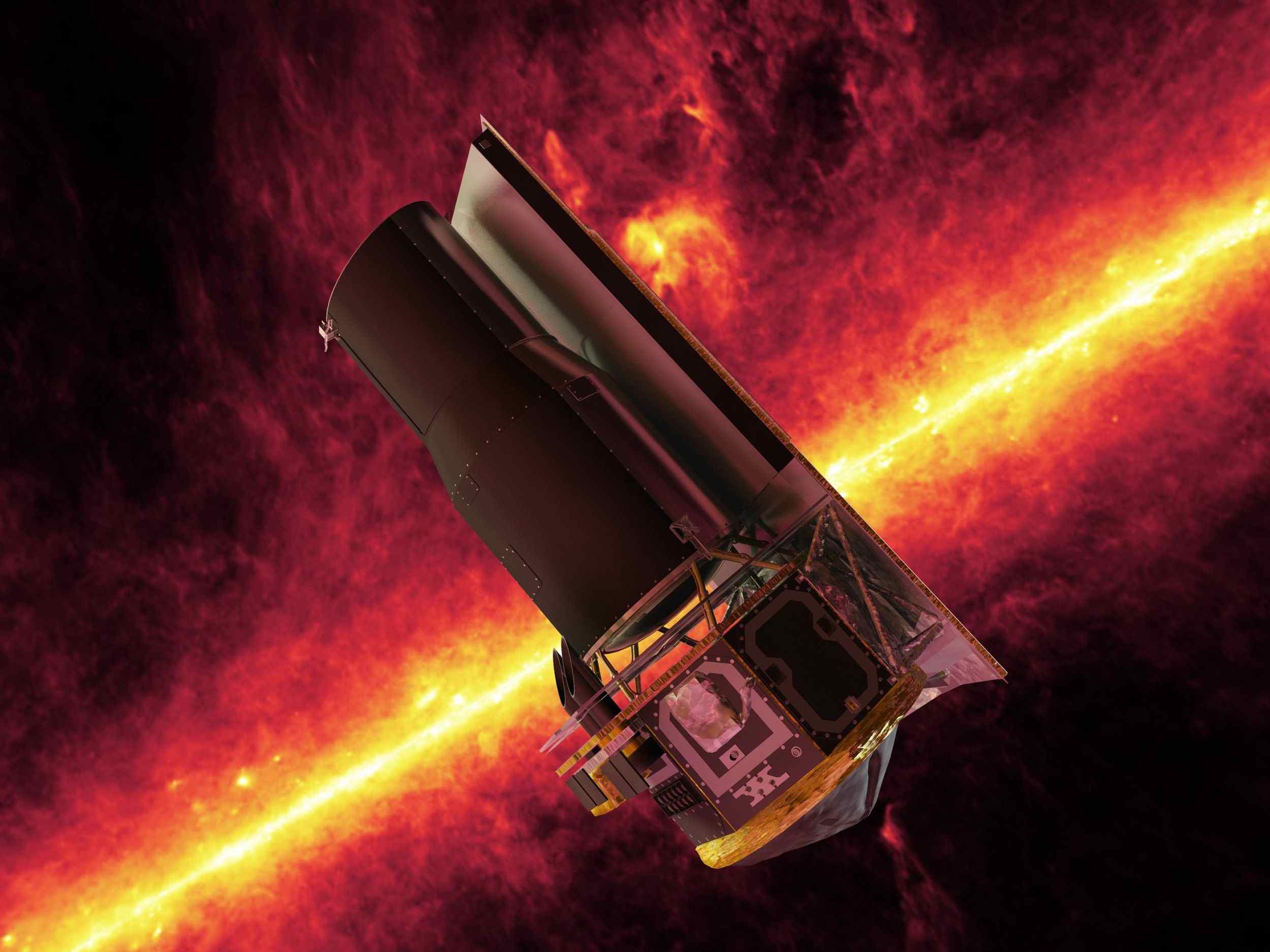It's time to say goodbye to NASA's Spitzer Space Telescope. Here's why.
It's one of NASA's Great Observatories.

How does NASA know it's time to end a mission? For the Spitzer Space Telescope, the agency can blame it on the spacecraft's juice.
Specifically, Spitzer's struggle comes from trying to balance charging its battery, communicating with Earth and keeping its instruments cool. When it launched in 2003, those tasks didn't interfere much with each other, but the longer the mission continued, the bigger a challenge it became. And so, on Jan. 30, more than 16 years after its launch, NASA will send the spacecraft its final commands.
"There is a natural end to the mission and we are reaching it," Luisa Rebull, an astronomer at the NASA Infrared Science Archive at the California Institute of Technology, which hosts Spitzer's data, told Space.com.
Related: Gallery: The Infrared Universe Seen by Spitzer Telescope
Spitzer was designed to focus on infrared light, which lets scientists see through dust that obscures the view of other types of telescopes. During its tenure, the spacecraft, which has cost a total of $1.36 billion over two decades, has used that talent to tackle astronomical puzzles like how stars and planets form.
"We see star-forming regions, we see galaxies forming and merging and just a whole cornucopia of objects in space that are not visible to our eyes in the optical, but are visible in the infrared," Suzanne Dodd, former mission manager for Spitzer, said during a news conference held today (Jan. 22).
That's because of something special about Spitzer.
Get the Space.com Newsletter
Breaking space news, the latest updates on rocket launches, skywatching events and more!
"One of the unique things about Spitzer that makes this all possible is its orbit," Dodd said. Spitzer orbits the sun, tagging along behind Earth and slipping a bit farther away from us each year. "It's drifting from the Earth and the moon, so it's not getting the infrared radiation that the Earth and moon system create." Without that interference, Spitzer can gather better data.
But eventually, that orbit means the spacecraft will be on the opposite side of the sun from Earth for a long period of time — a clear no-go for space communications. Right now, Spitzer is about a third of an orbit behind Earth, so the sun isn't yet blocking communications.
But even now, the logistics of the mission are becoming challenging. The farther Spitzer lags behind Earth, the more dramatically the spacecraft has to twist itself in order to communicate back to its scientists. That stresses the spacecraft's solar-charged batteries, Rebull said, and when they finally get to recharge, the batteries warm up.
"That's not good when you're trying to detect little bits of heat," she said — that would be the infrared light Spitzer targets, which is essentially radiated heat.
There's a second hot problem with the maneuver: The more the spacecraft twists, the more sunlight reaches part of the spacecraft that are supposed to stay cool. The longer the mission continues, the more time Spitzer scientists lose to this process. "You have to wait for the batteries to recharge and then everything to cool down again before you can keep observing," Rebull said.
Eventually, the spacecraft won't be able to make that maneuver at all, she added — it would run out of power while sending data back to Earth. That's why NASA made the decision to shut the telescope down. Spitzer will gather its last observations on Jan. 29 and turn off the next day.
Then, scientists will be left with hopes that another space telescope dedicated to the infrared will someday take its place — and, of course, with the data Spitzer has gathered over 16 years. It's a melancholy time for mission scientists, but not an unexpected one.
"I know it's just a space robot," Rebull said. "But he's our space robot."
- 50 Fabulous Deep-Space Nebula Photos
- With End in Sight, Spitzer Space Telescope Releases Glorious Nebula Images
- Zoom Through the Famous Orion Nebula with NASA's Incredible 3D Video
Email Meghan Bartels at mbartels@space.com or follow her @meghanbartels. Follow us on Twitter @Spacedotcom and on Facebook.

Join our Space Forums to keep talking space on the latest missions, night sky and more! And if you have a news tip, correction or comment, let us know at: community@space.com.

Meghan is a senior writer at Space.com and has more than five years' experience as a science journalist based in New York City. She joined Space.com in July 2018, with previous writing published in outlets including Newsweek and Audubon. Meghan earned an MA in science journalism from New York University and a BA in classics from Georgetown University, and in her free time she enjoys reading and visiting museums. Follow her on Twitter at @meghanbartels.
-
rod ReplyAdmin said:How does NASA know it's time to end a mission? For the Spitzer Space Telescope, the agency can blame it on the spacecraft's juice.
It's time to say goodbye to NASA's Spitzer Space Telescope. Here's why. : Read more
Spitzer showed the star formation rate in the Big Bang model, is dropping off rapidly and declining. ""...these results show that star formation across the universe peaked between 2.3 and 3.8 billion years after the Big Bang and has been decreasing ever since.", ref. Spitzer's Legacy, Sky & Telescope 139(1):18-25, 2020
Good graphs in this report plotting the decline via curve fitting, related to z numbers or redshifts. New galaxies are not forming, new globular clusters are not forming, stars are moving on the H-R star diagram towards white dwarf, neutron star, or black hole end of life. The 2nd Law/entropy is winding the universe down from a distinct, beginning that wound up the universe and Spitzer confirmed this in astronomy.









